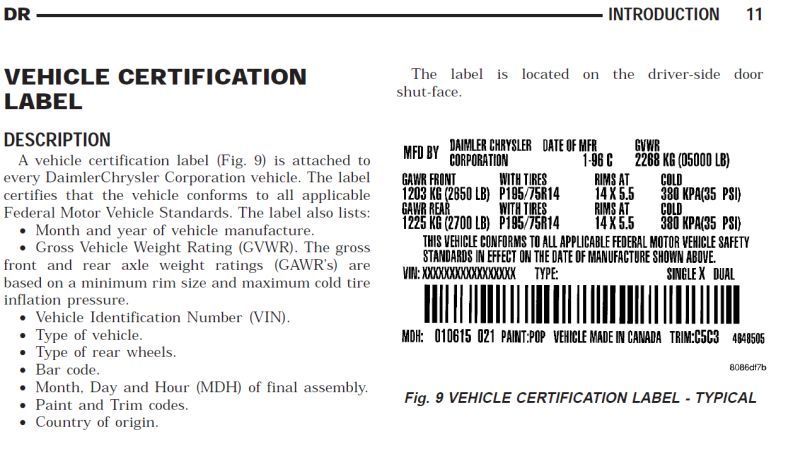Reddog1
Aug 24, 2015Explorer II
Door decal and Gross Vehicle Weight Rating (GVWR)
This subject comes up quite often It is frequently argued (discussed) as to what the door decals (Vehicle Certification Label) means, and how the GVWR is determined.
The purpose of this post is to provide what I see as official information on the Vehicle Certification Label. This is not intended to discuss what is or is not an overloaded truck.
This information is from the 2004 Dodge Ram Service Manual. The photos are from this manual. I will follow with additional photos to further emphasize what inks in this photo.

Note the Vehicle Certification Label (decal) clearly states the GVWR is based on the tires and wheels. This Vehicle Certification Label is not on a truck, but only the data would change if it were for a truck.

Again a clear reference to the tires and rims determining the GVWR.

We can read into this to ignore what it tells us, but I think it is very clear. If you have knowledge of anything that contradicts this 2004 Ram Service Manual, please post.
Wayne
The purpose of this post is to provide what I see as official information on the Vehicle Certification Label. This is not intended to discuss what is or is not an overloaded truck.
This information is from the 2004 Dodge Ram Service Manual. The photos are from this manual. I will follow with additional photos to further emphasize what inks in this photo.

Note the Vehicle Certification Label (decal) clearly states the GVWR is based on the tires and wheels. This Vehicle Certification Label is not on a truck, but only the data would change if it were for a truck.

Again a clear reference to the tires and rims determining the GVWR.

We can read into this to ignore what it tells us, but I think it is very clear. If you have knowledge of anything that contradicts this 2004 Ram Service Manual, please post.
Wayne